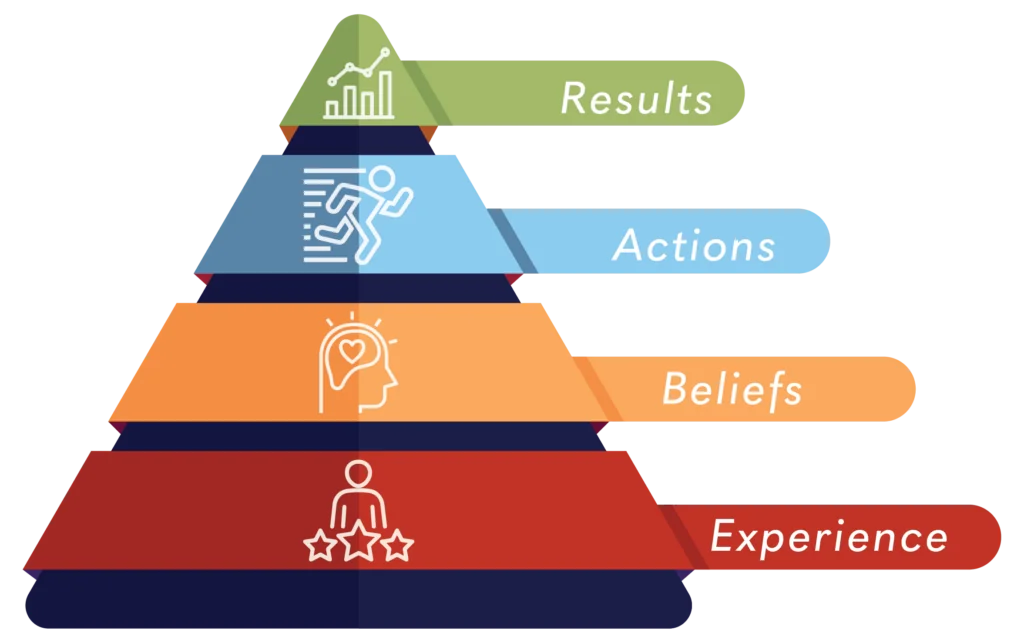Culture: The Sales Organization’s Secret Weapon

Janek Performance Group recently received the prestigious State of Nevada Top Workplaces 2023 Award, marking our third consecutive win. While we are humbled by this recognition, we accept this award proudly because it represents a lot of hard work. This Top Workplace Award serves as a reminder of the numerous factors to consider when building a successful sales organization. Among these priorities, culture stands at the top of the list—above processes and even profits. Culture is the ultimate tool in shaping a thriving company.
For modern businesses, culture is not merely a ping-pong table in the breakroom or a pet-friendly work policy. It has become the vital fuel that drives sales growth and the biggest lever to improve performance. A positive sales culture is imperative, so your sales team can come to the office excited to do excellent work. With their excitement comes exceptional performance, and with that performance comes happy clients. In this article, we will explore the significance of culture for sales organizations and provide practical insights on how to cultivate a thriving sales culture.
The Culture Pyramid
In the world of B2B sales, culture plays a pivotal role in driving success and achieving desired outcomes. It encompasses an organization’s collective mindset and behaviors. Culture can either propel or hinder sales performance. Unfortunately, many sales leaders either overlook or underestimate the importance of actively managing their sales culture, leading to disengagement, confusion, and subpar sales results.
Visualize culture as a pyramid with multiple levels that influence the organization. At the base of the pyramid are the experiences employees have within the organization. These day-to-day experiences shape their beliefs about the workplace, the second pyramid level. Employees’ beliefs influence their actions, and those actions produce results, at the top of the pyramid. By visualizing a pyramid, it’s evident that culture flows from experience to results.

Ultimately, leadership must be accountable for culture. Leadership accountability can be broken down into four components:
- See it: Look for, seek out, and listen to input about what isn’t working.
- Own it: Get personally invested in the problem, learn from prior successes and failures, act upon the feedback you’ve received, and line up your actions with the desired results.
- Solve it: Find ways to overcome the obstacles you’ve seen and owned.
- Do it: Get your hands dirty, execute the solution, don’t blame others for problems, and model the results you want so that others can follow.
In today’s fast-paced, competitive business landscape, when an organization needs new sales results, it’s up to leadership to change the culture. The current culture will not produce new results. Leaders’ biggest mistake is believing results can improve without a culture change. For struggling organizations, the following thought must be erased:
“We are one (new hire, new product, new marketing campaign, new customer) away from success.”
Same Culture, Same Results
Professional sports teams can provide great examples. The Dallas Cowboys have been one coach, one quarterback, or one play away from a championship. They have been consistently mediocre for decades. While the Cowboys have a storied history, their on-field results have yet to match the high expectations associated with the franchise. While praised for his business acumen, Jerry Jones, their owner and general manager, has been criticized for needing more accountability. When accountability is lacking, it can lead to a lack of urgency, a tolerance for underperformance, and a failure to address and rectify issues that may hinder success.
New Culture, New Results
An example of a professional sports team that underwent a culture change and experienced rapid improvement is the Golden State Warriors in the NBA. Before the 2010s, the Warriors had a history of mediocrity and were not considered a top-tier team in the league.
However, under the ownership of Joe Lacob and the leadership of Head Coach Steve Kerr, the team initiated a cultural transformation that propelled them to become one of the most successful teams in recent NBA history. Several factors characterized the Warriors’ culture change that can be applied to any sales organization.
- Emphasis on Teamwork: The team embraced a selfless, team-first mentality, shifting away from individual stardom. This cultural shift was driven by Kerr, who emphasized ball movement, unselfish play, and a collective mindset over individual accolades. The team prioritized finding the best shot, regardless of who took it, leading to a more cohesive and effective playing style.
- Commitment to Player Development: The Warriors invested heavily in player development, both on and off the court. They prioritized creating a positive and supportive environment for player growth, focusing on skill development, physical conditioning, and mental well-being. This dedication to player development allowed the team to maximize the potential of their roster and build a strong foundation for sustained success.
- Grind Mindset: The Warriors’ cultural shift placed a significant emphasis on effort. They recognized the importance of a tenacious defense and implemented a defense that prioritized effort. This mindset shift enabled them to shut down opponents and win games through defensive stops.
- Positive and Supportive Environment: The Warriors fostered a culture of positivity, trust, and camaraderie within the team. They created an environment where players felt valued, supported, and empowered to take risks. This culture of trust and collaboration translated into on-court chemistry and a resilient team spirit.
The cultural transformation of the Golden State Warriors yielded remarkable results. The team won three NBA championships in a span of four years (2015, 2017, 2018) and set several NBA records, including the most wins in a regular season (73 wins in 2015-2016).
The Golden State Warriors are a compelling example of how a culture change can lead to rapid improvement and sustained success. The Warriors’ cultural shift transformed the team and had a broader impact on the NBA. Their success influenced other teams to adopt a similar style of play and prioritize teamwork and player development.
Clear Communication
When changing culture, something must fill the gap between the old and the new. That something is clear communication. To achieve new results, team members must have a clear understanding of both their individual and the company’s overarching goals. This knowledge enables them to think creatively and find effective solutions.
Clear communication involves leadership explaining the rationale behind the new goals to the team. By communicating the why behind the goals, leadership can rally the team, getting them excited about the new initiatives. It also helps employees understand the bigger picture and fosters a two-way communication environment between employees and executives.
With two-way communication, employees should be encouraged to ask questions — the tougher, the better. It is vital to show employees, especially subordinates, that they can and should share their concerns. This demonstrates that their concerns are valued. Here at Janek, we hold quarterly all-company virtual meetings where everyone is free to ask questions to senior leadership.
Communicating all aspects of the business to all employees can be challenging. But the rewards are worth the effort. For example, when customer service employees know more about the company’s strategic plans, they respond better to client demands. In an ideal world, you should be able to stop any employee and ask what the top five goals of the company are over the next six months. If they can’t tell you, you have an opportunity to improve your culture.
Conclusion
Sales leaders must be intentional about the culture they are creating. While strategy may outline the roadmap and goals, culture provides the necessary fuel to propel the organization forward, overcome challenges and achieve greater sustained success. As you move forward with your culture transition, remember the four levels of the culture pyramid: experience, beliefs, actions, and results.
Transparency and open communication are essential components of a strong culture. Regularly sharing information, providing feedback, and involving employees in decision-making fosters a sense of ownership and involvement. It also allows employees to understand the company’s strategic direction, how their work contributes to the overall goals, and how they can actively participate in driving positive change.
In the words of famous business leader Peter Drucker, “Culture eats strategy for breakfast.” This quote serves as a potent reminder that sales culture is not a secondary consideration but a critical factor in the success of every company. By nurturing a positive and purpose-driven sales culture, sales leaders can unlock the full potential of their employees, delight customers, attract top talent, and achieve long-term success in an ever-evolving business landscape.

- Account Planning (16)
- Awards (42)
- Client Testimonial (37)
- Personal Branding (21)
- Podcast (12)
- Research (77)
- Sales Career Development (90)
- Sales Coaching (165)
- Sales Consulting (141)
- Sales Culture (181)
- Sales Enablement (380)
- Sales Leadership (112)
- Sales Management (268)
- Sales Negotiation (11)
- Sales Prospecting (136)
- Sales Role-Playing (19)
- Sales Training (242)
- Selling Strategies (279)
- Soft Skills (78)
- Talent Management (101)
- Trusted Advisor (29)
- Virtual Selling (57)
- Webinar (13)




























